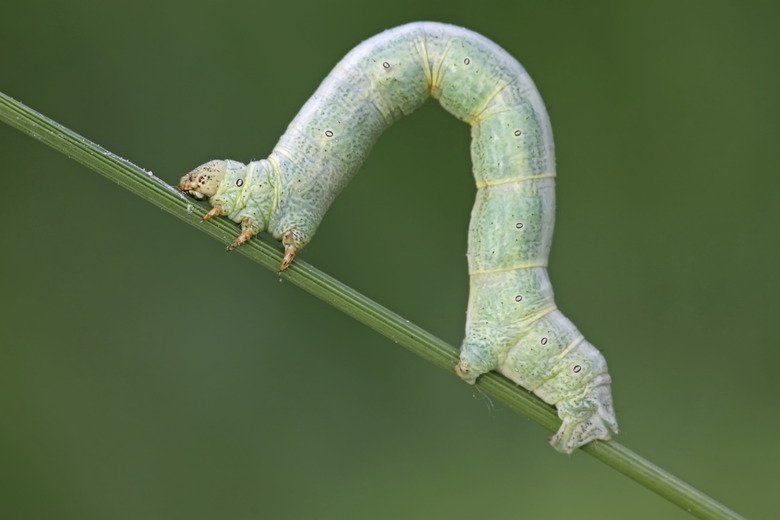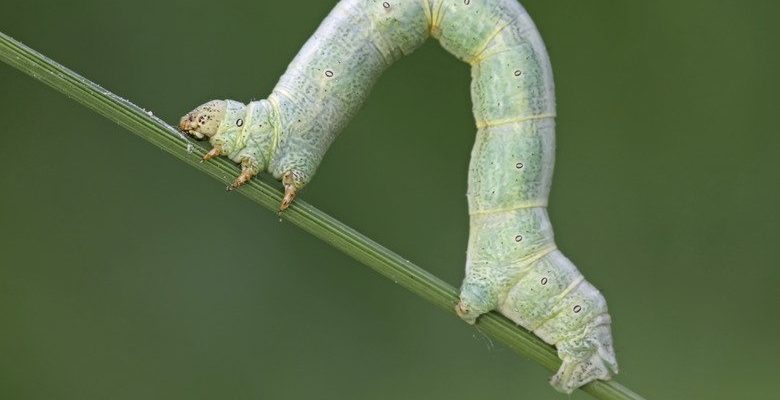
Now, you might be wondering how these inchworms fit into the big picture of moths and their life cycles. Think of it this way: every inchworm is part of an incredible journey, a transformation that not only shapes its existence but also impacts the ecosystem around it. In this post, we’ll dive into the fascinating lifecycle of inchworms and explore their connection to the various native moth species they eventually become.
What Are Inchworms?
Inchworms are actually the larvae of certain moth species, primarily belonging to the family Geometridae. This family includes many species that are common across different regions, contributing significantly to local biodiversity. When we picture an inchworm, we often imagine their distinctive way of moving: they create a looping motion by drawing in their rear end while extending their front, making them seem like they are inching along.
These little creatures are usually green or brown, allowing them to blend into their surroundings. This camouflage helps them avoid predators, making them more likely to reach adulthood. Inchworms primarily feed on leaves, munching their way through a variety of plants. This diet not only helps them grow but also ties them to the plants in their environment.
The Lifecycle of an Inchworm
The lifecycle of inchworms is truly intriguing. It begins when a female moth lays eggs on the leaves of a host plant. After a few days, the eggs hatch into tiny larvae—our inchworms! Initially, they feed on the foliage, spending most of their time growing and developing.
As they grow, inchworms go through several stages, known as instars. An inchworm can take anywhere from a few weeks to several months to reach its full size, depending on the species and environmental conditions. Here’s how it typically breaks down:
- Egg Stage: The beginning of life, where eggs are laid on suitable plants.
- Lava Stage: The inchworm hatches and begins to eat leaves.
- Pupal Stage: Once big enough, the inchworm forms a pupa or chrysalis.
- Adult Stage: Finally, it emerges as a moth, ready to start the cycle all over.
It’s during the transformation from inchworm to moth that things get dramatic. The inchworm will enter its pupal stage, often camouflaging itself to avoid being seen by predators. Here’s the thing: it’s in that chrysalis that the real magic happens. The inchworm completely remodels itself into a moth, often gaining beautiful wings and the ability to fly!
The Connection to Native Moth Species
So, what’s the big deal about inchworms becoming moths? Well, these creatures are essential to the ecosystem. When they turn into moths, they contribute to the balance of nature in several ways. For starters, moths are vital pollinators. Just like bees, they help plants reproduce by transferring pollen as they feed on nectar. This isn’t just a casual side job; it’s a crucial part of maintaining plant health and biodiversity.
In addition to pollination, native moths serve as a food source for various animals, including birds and bats. Without inchworms and the moths they become, many species would struggle to find food. It’s a beautiful example of how interconnected our environment is—every creature plays a role in maintaining balance.
Some common native moths that emerge from inchworms include the **Luna Moth** and the **Eastern Tent Caterpillar Moth**. Each has unique characteristics that make them special in their own right, adding to the richness of our natural world.
The Role of Inchworms in the Ecosystem
Understanding the role of inchworms in the ecosystem helps us appreciate their place in nature. As they munch on leaves, inchworms affect plant growth directly. A healthy population of inchworms can contribute to a balanced ecosystem, ensuring that plants don’t become overgrown.
However, too many inchworms can lead to defoliation, impacting the plants’ health and the animals that rely on them. This balance is crucial—nature has a way of correcting itself. But if we take away natural predators or change habitats, we might see unexpected shifts.
In addition to their ecological impact, inchworms also connect us to the larger story of life cycles. Everything from how they survive to how they evolve into moths reflects nature’s incredible adaptability. It’s a reminder of the importance of preserving these delicate connections in our environment.
Identifying Inchworms and Their Moths
If you’re interested in observing inchworms or their moth counterparts, identification is key. Inchworms can often be spotted on trees or bushes, particularly in spring and summer. They might be easier to spot when they’re feeding, as they create noticeable holes in leaves.
When it comes to identifying the moths, look for these common characteristics:
- Wings: Many native moths, like the Luna Moth, have striking wings with beautiful patterns.
- Size: Moths vary in size; some might be quite large while others are small and delicate.
- Behavior: Moths are generally more active at night, so keep an eye out for them when the sun goes down.
If you’re still unsure, consider using a field guide or a mobile app specifically designed for identifying moths. The more familiar you become with their features, the easier it’ll be to appreciate these creatures’ unique roles in nature.
Conservation and Awareness
As we learn about inchworms and native moth species, it’s important to recognize the need for conservation efforts. Many habitats where these creatures thrive are at risk due to urban development, climate change, and pesticide use.
By making small changes in our gardens—like planting native plants, reducing pesticide use, and creating habitats for these insects—we can contribute to their survival. It’s amazing what a little awareness and effort can do!
Creating awareness about the importance of these creatures can also inspire others to appreciate their roles within the ecosystem. Each inchworm that becomes a moth represents a part of a larger cycle, reminding us that every creature, no matter how small, is important.
The lifecycle of inchworms and their connection to native moth species paints a captivating picture of growth and transformation. From their unique inching motion as larvae to their emergence as beautiful moths, these creatures play essential roles in our ecosystems.
Understanding and appreciating inchworms helps us realize the delicate balance within nature. By being mindful of our environment and supporting conservation efforts, we can ensure that these exciting life cycles continue for generations to come. So next time you spot an inchworm, take a moment to appreciate the journey it’s on – you’re witnessing nature’s magic at work!

